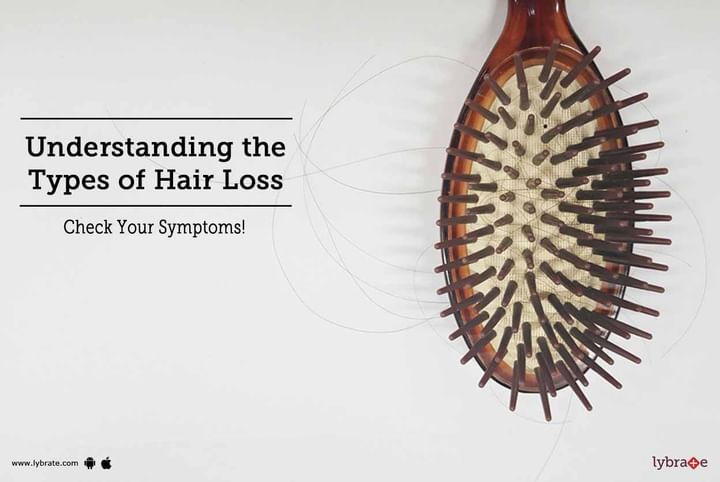Get the App
For Doctors
Login/Sign-up
Last Updated: May 26, 2023
BookMark
Report
Understanding the Types of Hair Loss - Check Your Symptoms!
At any point of time, only 90% of your hair is growing. The remaining 10% is resting and falls off after 2 to 3 months to make space for new hair follicles. Thus, while it is normal to shed a few strands of hair a day is normal, waking up to find multiple strands of hair on your pillow can be a nightmare for anyone.
Hair loss can be of many types and in order to treat it, you must first figure what type of hair loss you suffer from. Some of the main types of hair loss are:
- Involutional alopecia: This type of hair loss affects people who are middle aged and older. In such cases, more and more hair follicles go into the resting phase after which they fall off. The hair that remains becomes shorter and brittle making it easier to break.
- Telogen effluvium: Telogen effluvium is a temporary condition that causes changes in the hair follicle’s growth cycle and puts a number of hair follicles into the resting phase simultaneously. This is often experienced after a stressful event like a severe illness, childbirth, stress or sudden weight loss, and can last for anywhere between a few weeks to a few months.
- Male and female pattern baldness: For males, hair loss at the top of the scalp in an ‘M’ shape which gradually turns into a ‘U’ around the side of the head is a sign of pattern baldness. This condition makes hair follicle thinner, shorter and brittle and is triggered by genetic conditions. For women, this condition begins with hair loss at the crown and gradually progresses to complete baldness. Both male and female pattern baldness have very gradual hair loss and so you may not notice significant thinning until quite late.
- Patchy hair loss: One of the most noticeable symptoms of this type of hair loss is one or two smooth, hairless spots. Apart from the scalp, it can also affect the eyebrows, arms, legs and facial hair. In most cases, this has a sudden onset and is temporary. However, when hair grows back in one bald spot, it may fall out from another. In some cases, the hair may not fall out but may break, leaving behind patches of extremely short hair.
- Tinea capitis: This is a contagious fungal infection that affects the scalp of school-going children. It makes hair in certain patches or all over the scalp break off and triggers inflammation in the scalp. Pus-filled sores and a scaly scalp are other symptoms of this condition.
- Trichotillomania: Hair fall can also be triggered if you twist or pull your own hair. This psychological disorder often affects children and causes hair loss by breakage. If you wish to discuss about any specific problem, you can consult a dermatologist.



+1.svg)
